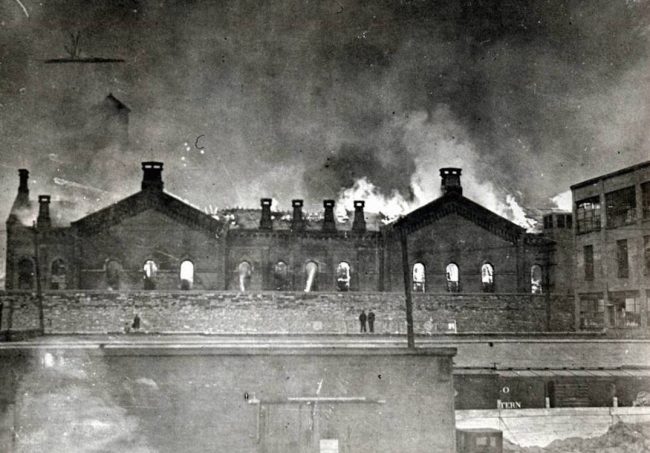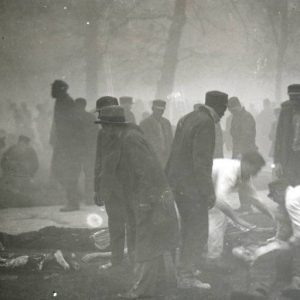 On April 21, 1930, 322 inmates were killed in a fire at the Ohio State Penitentiary.
On April 21, 1930, 322 inmates were killed in a fire at the Ohio State Penitentiary.
 The prison had been built for 1,500 and at the time of the fire it held 4,300. It long had a reputation of unspeakable cruelty. When the fire began, men were left to burn, locked in their cells. In Forgotten History: The Great Columbus Prison Fire of 1930, Zoey Miller explains:
The prison had been built for 1,500 and at the time of the fire it held 4,300. It long had a reputation of unspeakable cruelty. When the fire began, men were left to burn, locked in their cells. In Forgotten History: The Great Columbus Prison Fire of 1930, Zoey Miller explains:
Soon a local battalion of 500 armed soldiers set up machine guns and loaded rifles, leveled at the inmates in warning. Not one of these men helped them to escape.
The prisoners knew, if they were going to survive, it would have to be done themselves.
A handful of the few that had managed to escape being locked in, overpowered a guard, stealing his key and dashing back into the flames. They unlocked as many cells as they could and as they went along the other inmates helped carry the injured, attempting to put out the flames and saving as many as they could.
Read more in Prisoners Left to Burn in Ohio Fire via History.com. Author Chester Himes, a prisoner at the time, wrote about the fire in To What Red Hell.
Himes saw the bodies of dead men left in the yard during the initial cleanup. In the two weeks after the fire, the inmates refused to go back to their sentences’ hard labor, protesting guards’ initial refusal to release men from their cells when the fire started. These prisoners, segregated by race and capacity for violence, whom Himes had observed doing heinous things to each other before the fire, became the men trying to help each other when the guards didn’t. Continue reading in article about Himes, “The Lonely Crusade.”
The history and current reality of incarceration in the U.S. do not get enough attention in textbooks nor the media. Below are resources for teaching outside the textbook.












Twitter
Google plus
LinkedIn